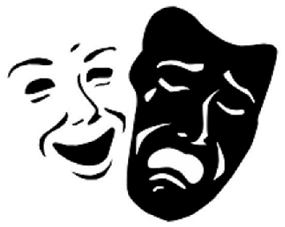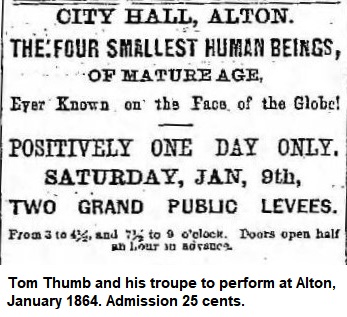Early Theaters in Madison County
Brief History of Theater in the United States
As Europeans settled in the eastern part of what would become the
United States, colonists looked to entertainment to break the
monotony of life in the wilderness. They brought with them a
repertoire from England that included productions such as
Shakespeare's Hamlet and Othello. The first theater in America was
built on the Palace Green by merchant William Levingston in
Williamsburg, Virginia in 1716. This theater was closely followed by
the opening of the Dock Street Theater in Charleston, South
Carolina, in 1730. This theater is still in operation today.

Theater in the New World struggled during the 18th century. Tensions
between the colonies and Britain increased, and due to moral
implications of both acting in and viewing plays, some colonies such
as Massachusetts passed laws which forbid plays. During the war for
American Independence, theater was practically nonexistant. However,
when the war was over and America won her independence from Britain,
theater returned once again. As colonists began to move west and
settle, towns were founded, and public buildings such as city halls
were used as theaters. Prominent businessmen erected playhouses or
opera houses, and actors traveled from town to town to perform. By
the 20th century, vaudeville productions became popular, which
included singers, comedians, novelty acts, and magicians who
entertained America.
The first known public entertainment in Madison County was in Alton
in 1838, when the Chicago Company performed in the long room over
the store of Mr. Walworth. The first known theater was in the old
courtroom in the Riley building at Alby and West Broadway. This
building still stands. It was advertised in 1845 as a "grand
picturesque and mechanical theater." For 25 cents, you could see the
bombardment and capture of San Juan in Mexico by the French, and the
naval combat between the ships Constitution and the Guerriere.
The third floor in the Alton city hall, erected in 1858, was used as
a live theater. Root Opera House on Belle Street was erected by
Augustine K. Root in 1882. In the earliest days of 1900, other
theaters opened such as the Bijou, Lyric, and Nixon. When
electricity became available and silent movies were produced, some
of the theaters converted from live plays to film, and in time,
talking movies were all the rage. Modern society turned to
entertainment as a past-time, as Hollywood brought musicals, daring
war films, dramas, and westerns to all of America.
